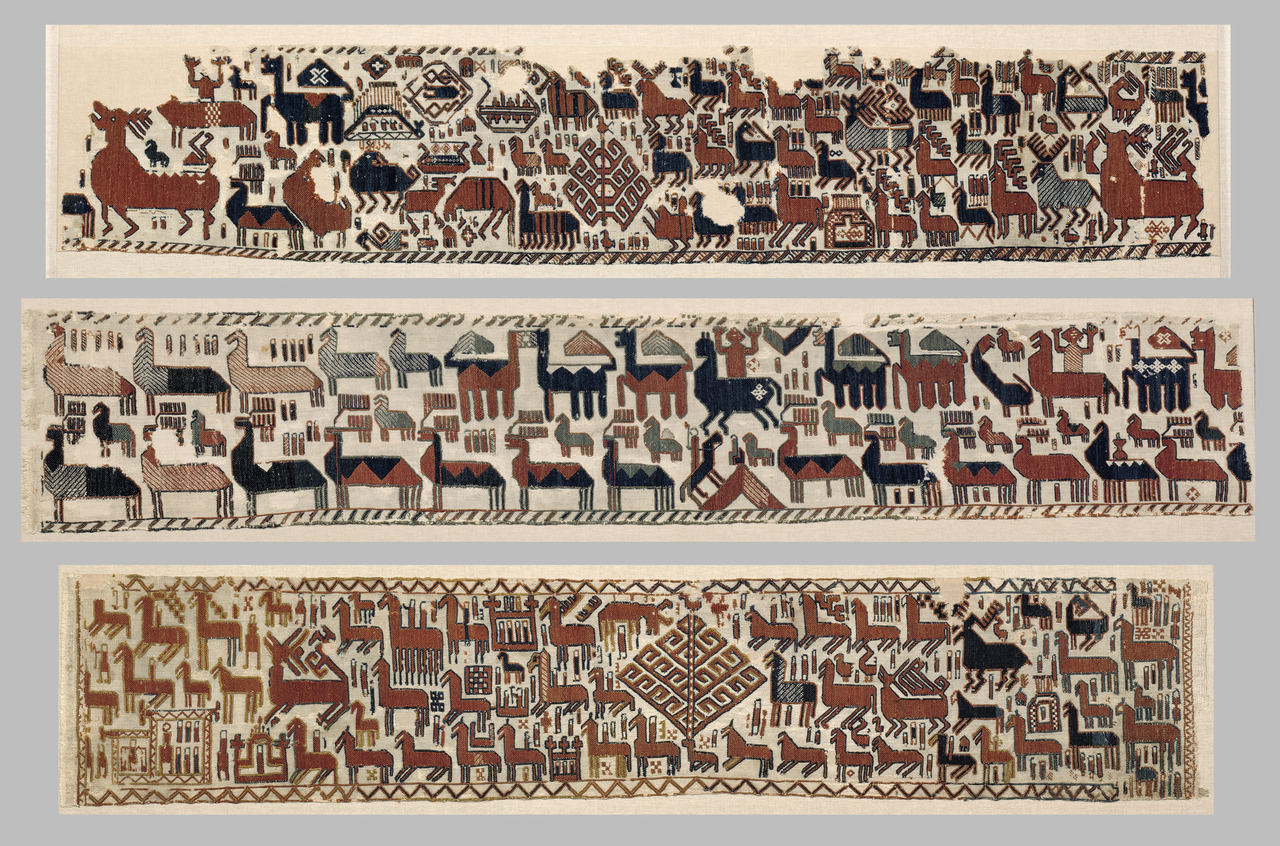Överhogdal tapestries on:
[Wikipedia]
[Google]
[Amazon]


 The Överhogdal tapestries ( sv, Överhogdalstapeten) are a group of extraordinarily well-preserved textiles dating from late
The Överhogdal tapestries ( sv, Överhogdalstapeten) are a group of extraordinarily well-preserved textiles dating from late
The Överhogdal Tapestries
at Jamtli


 The Överhogdal tapestries ( sv, Överhogdalstapeten) are a group of extraordinarily well-preserved textiles dating from late
The Överhogdal tapestries ( sv, Överhogdalstapeten) are a group of extraordinarily well-preserved textiles dating from late Viking Age
The Viking Age () was the period during the Middle Ages when Norsemen known as Vikings undertook large-scale raiding, colonizing, conquest, and trading throughout Europe and reached North America. It followed the Migration Period and the Germ ...
or early Middle Ages
In the history of Europe, the Middle Ages or medieval period lasted approximately from the late 5th to the late 15th centuries, similar to the post-classical period of global history. It began with the fall of the Western Roman Empire ...
that were discovered in the village of Överhogdal in Härjedalen
Härjedalen (; no, Herjådalen or ) is a historical province (''landskap'') in the centre of Sweden. It borders the Norwegian county of Trøndelag as well as the provinces of Dalarna, Hälsingland, Medelpad, and Jämtland. The province origi ...
, Sweden.
Discovery and dating
The Överhogdal tapestries were found in thevestry
A vestry was a committee for the local secular and ecclesiastical government for a parish in England, Wales and some English colonies which originally met in the vestry or sacristy of the parish church, and consequently became known colloquiall ...
of Överhogdal Church (''Överhogdals kyrka'') in the Diocese of Härnösand
The Diocese of Härnösand ( sv, Härnösands stift) is a division in the Church of Sweden in Västernorrland County. The Cathedral is located at Trädgårdsgatan in Härnösand.
History
The diocese was established in 1647. In 1904, the diocese o ...
by Jonas Holm (1895-1986) in 1909 during the renovation of the church. The tapestries were brought to Östersund
Östersund (; sma, Staare) is an urban area (city) in Jämtland in the middle of Sweden. It is the seat of Östersund Municipality and the capital of Jämtland County. Östersund is located at the shores of Sweden's fifth-largest lake, Storsjön, ...
in 1910 by the artist Paul Jonze (1883-1973) and the County Governor's wife Ellen Widén, who was a dominant figure within the regional heritage movement at the time, took charge. The first thing she did was to give the dirty linen a good wash.
Radiocarbon dating tests conducted in 1991 indicated that the tapestries were made between 800 and 1100 AD during Viking Era
The Viking Age () was the period during the Middle Ages when Norsemen known as Vikings undertook large-scale raiding, colonizing, conquest, and trading throughout Europe and reached North America. It followed the Migration Period and the Ger ...
. Newer tests in 2005 instead indicated a period between 1040 and 1170 AD.
Description and construction
The Överhogdal tapestries have been theorized as depicting imagery of both Norse and Christian origin. The contents of the pictures are much debated; some characters have a pagan content, featuring the detailed look of Odin's horse Sleipnir, while other characters are clearly part of Christian imagery. The artwork depict stylized animals, dark blue and red horses, birds and people. There is also a ship, a tree and inscriptions. The four surviving sections of the tapestries have 323 figures of people and 146 and 3 partial animals, all generally moving to the left. The large animal and smaller human figures seem to rush by a tree, which could be the mighty ashYggdrasil
Yggdrasil (from Old Norse ), in Norse cosmology, is an immense and central sacred tree. Around it exists all else, including the Nine Worlds.
Yggdrasil is attested in the ''Poetic Edda'' compiled in the 13th century from earlier traditional ...
, a massive tree central to nine worlds
Norse cosmology is the study of the cosmos (cosmology) as perceived by the ancient North Germanic peoples. The topic encompasses concepts from Norse mythology, such as notions of time and space, cosmogony, personifications, anthropogeny, and escha ...
in Norse mythology. Some scholars have suggested that what is shown is the Christianization of the region Härjedalen
Härjedalen (; no, Herjådalen or ) is a historical province (''landskap'') in the centre of Sweden. It borders the Norwegian county of Trøndelag as well as the provinces of Dalarna, Hälsingland, Medelpad, and Jämtland. The province origi ...
. However, today the dominant theory, given the radiocarbon dating of the tapestries, is that Ragnarök, a series of events foretold to occur in Norse mythology, is being depicted. Research has established that the figures are made of plant dyed wool, which is interwoven with the linen with a special technique.
Today, these unique tapestries are on display in a specially designed room at Jamtli, the regional museum of Jämtland and Härjedalen
Härjedalen (; no, Herjådalen or ) is a historical province (''landskap'') in the centre of Sweden. It borders the Norwegian county of Trøndelag as well as the provinces of Dalarna, Hälsingland, Medelpad, and Jämtland. The province origi ...
in Östersund
Östersund (; sma, Staare) is an urban area (city) in Jämtland in the middle of Sweden. It is the seat of Östersund Municipality and the capital of Jämtland County. Östersund is located at the shores of Sweden's fifth-largest lake, Storsjön, ...
.
See also
* Grödinge tapestry * Skog tapestry * Bayeux TapestryReferences
External links
The Överhogdal Tapestries
at Jamtli
Related reading
* Ulla Oscarsson (2010) ''De gåtfulla Överhogdalsbonaderna''(Östersund: Jamtli Förlag) {{DEFAULTSORT:Overhogdal tapestries Eschatology in Norse mythology Scandinavian folklore Viking art Germanic archaeological artifacts Overhogdal 1909 archaeological discoveries Textile arts of Sweden